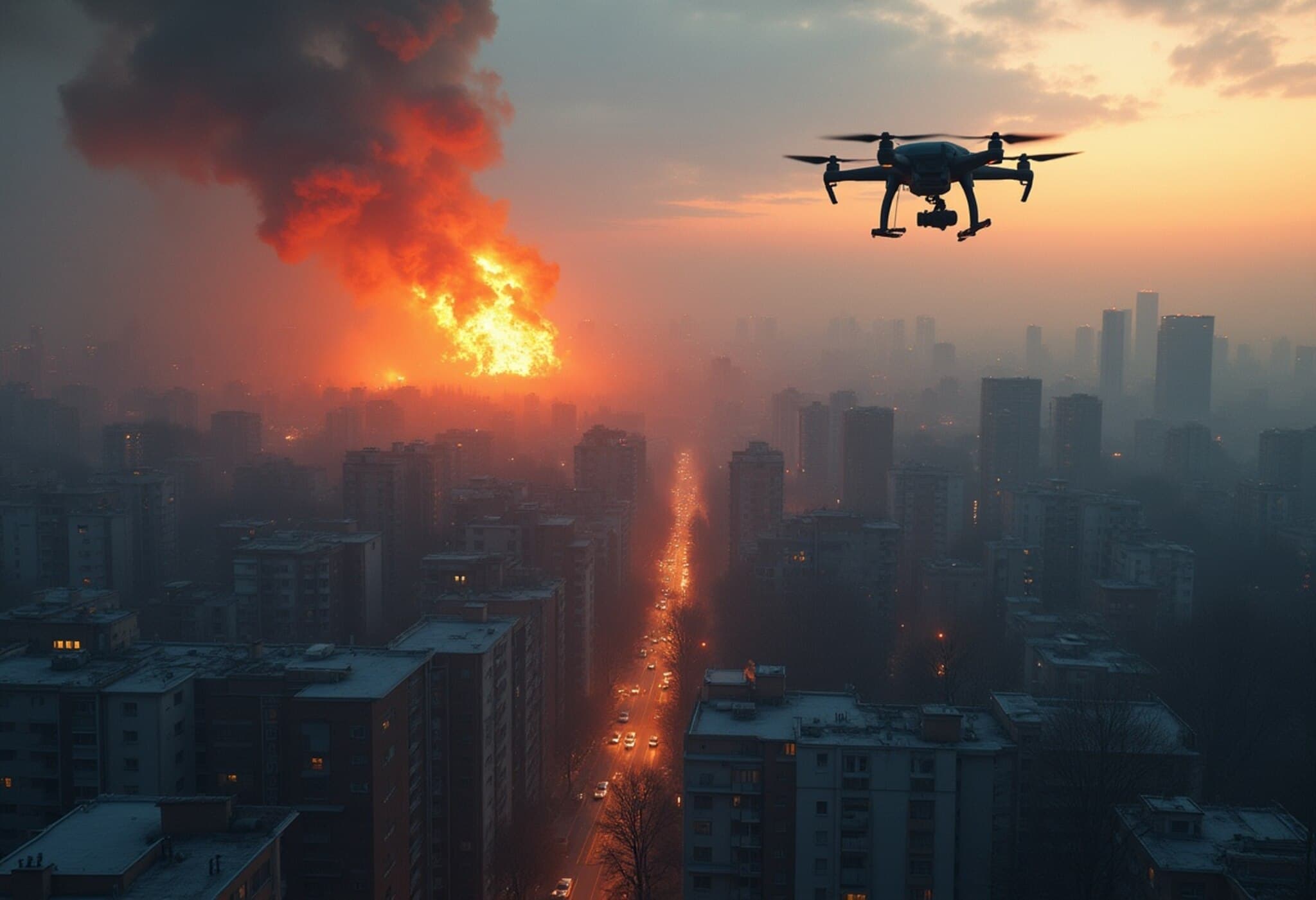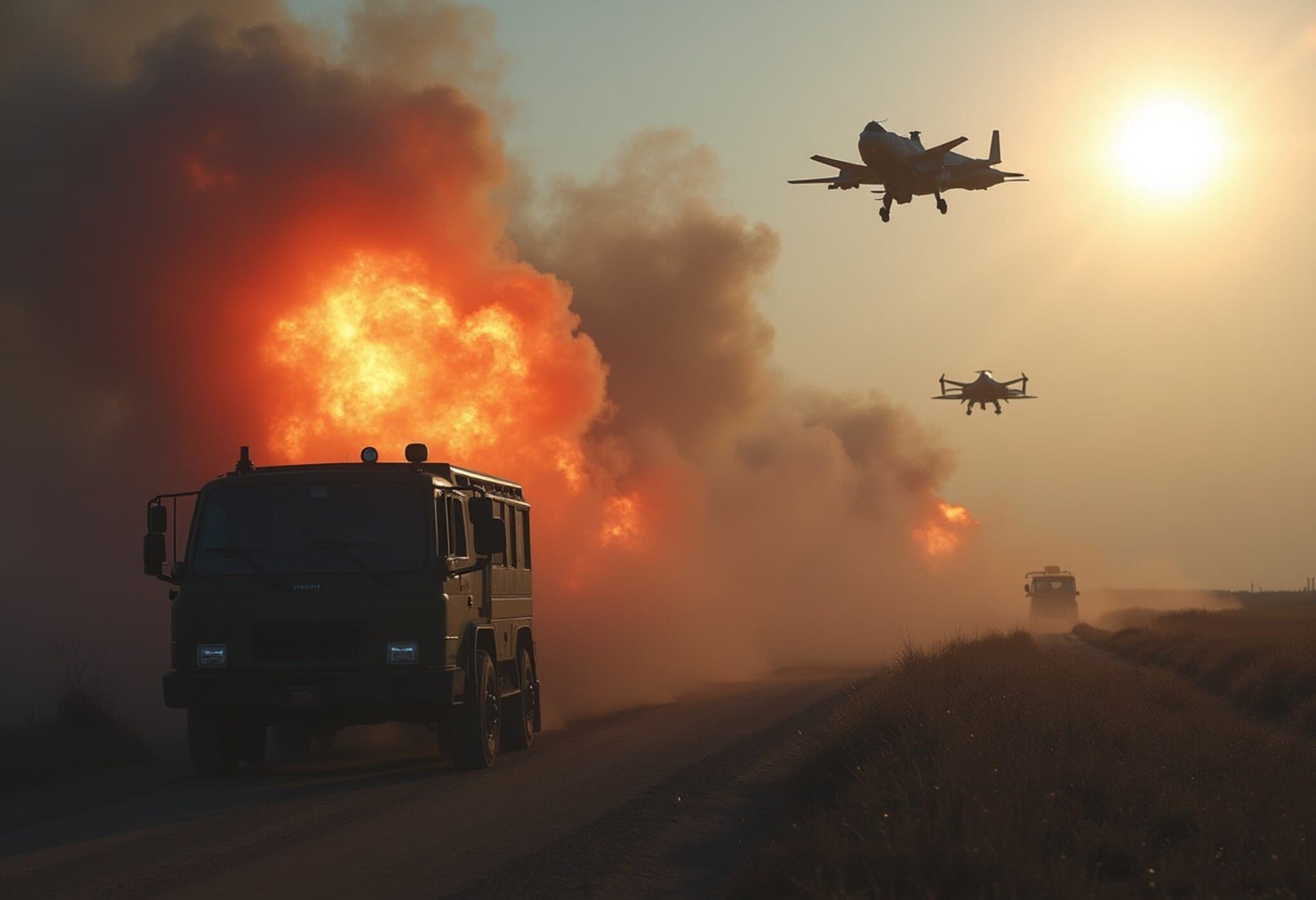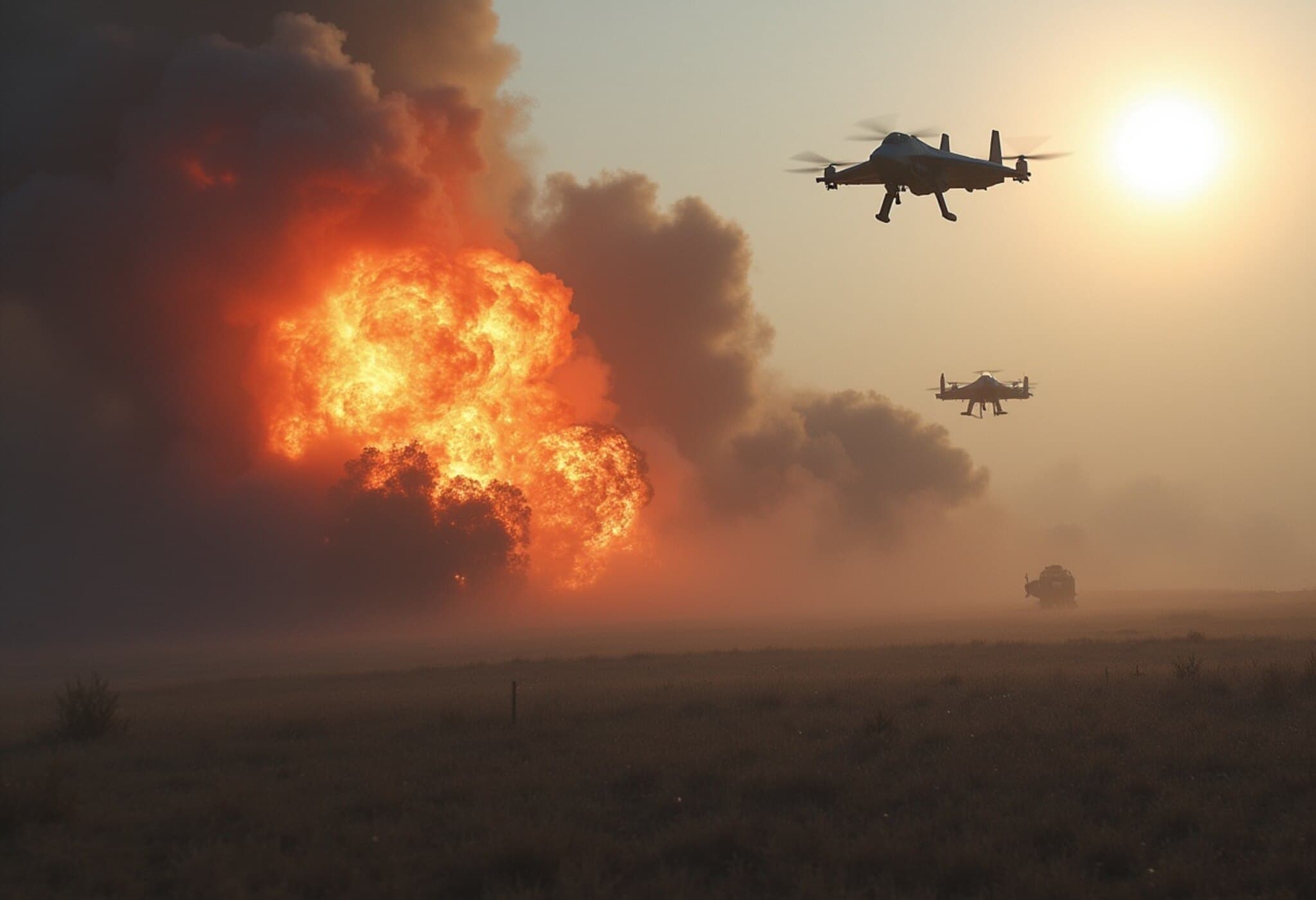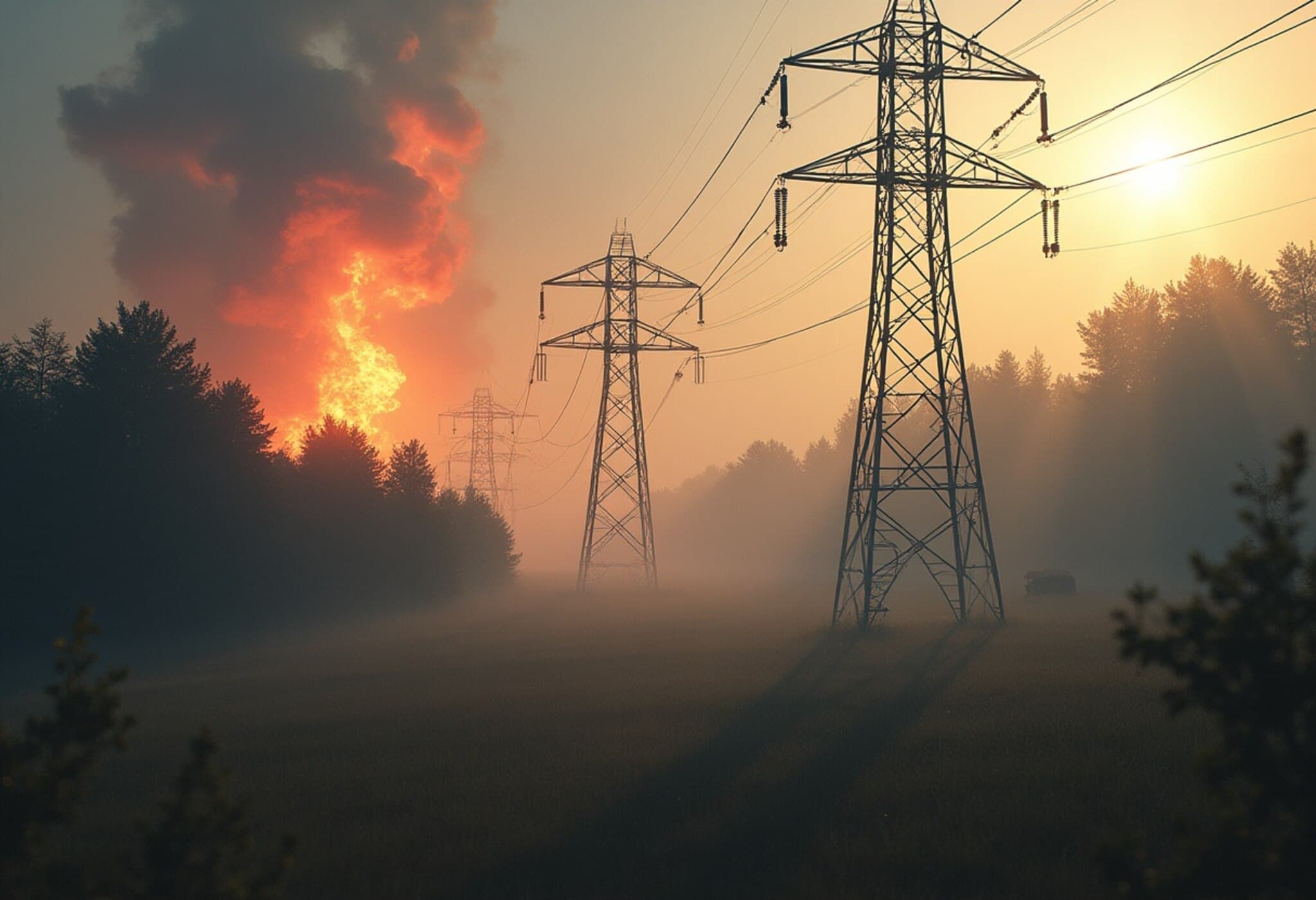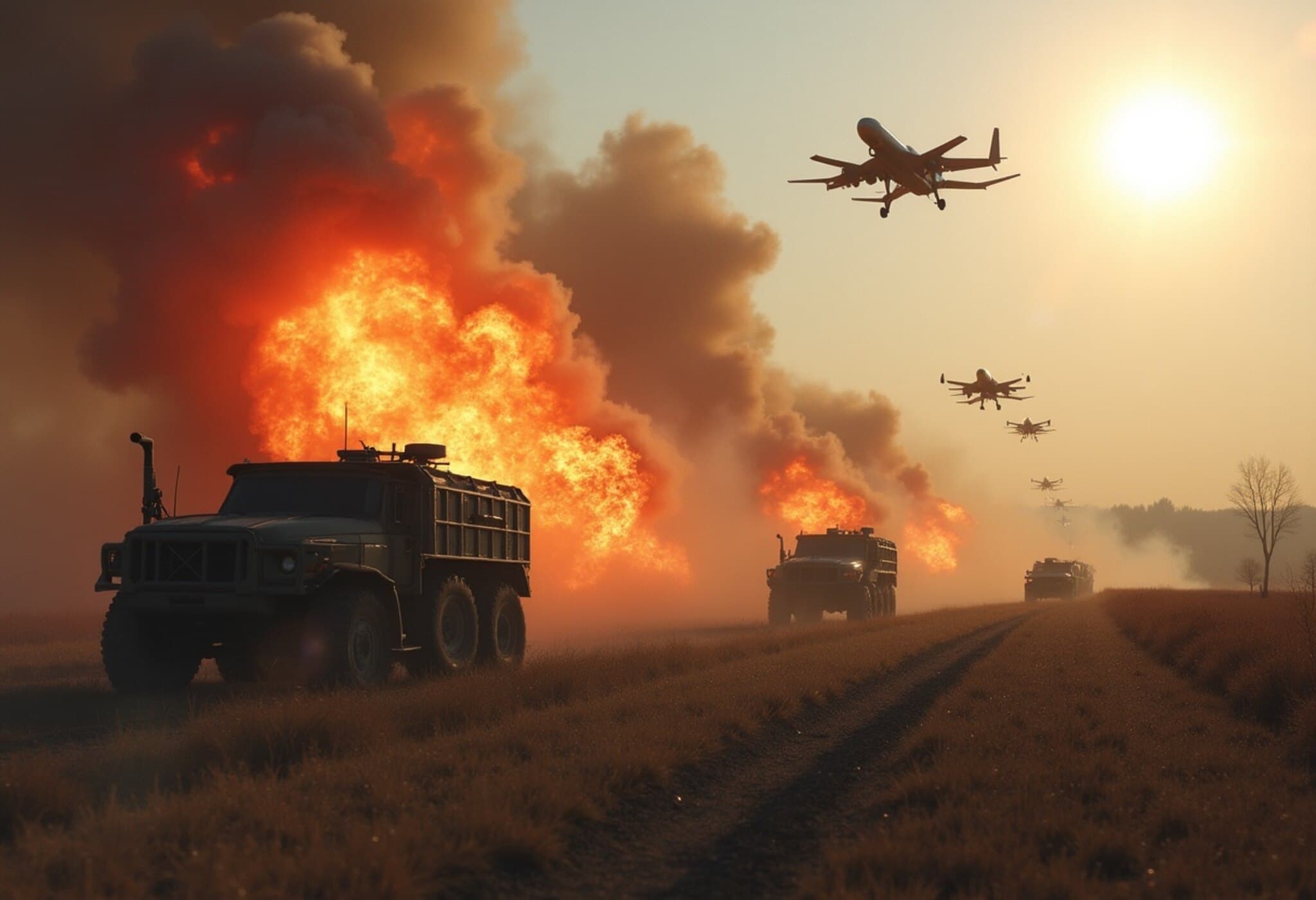Ukrainian Drone Strike Hits Saratov Region, Leaving One Dead and Property Damaged
In the early hours of Sunday, the southern Russian region of Saratov witnessed a devastating Ukrainian drone strike that resulted in the death of one person and inflicted notable damage to residential apartments and an industrial facility. The incident underscores the ongoing intensity and reach of the conflict between Russia and Ukraine, with both sides continuing to target strategic locations beyond frontlines.
The Attack Details and Immediate Aftermath
Roman Busargin, governor of Saratov, took to Telegram to confirm that debris from a destroyed Ukrainian drone struck three apartments. Residents were evacuated promptly, and several received medical treatment onsite. Tragically, one individual succumbed to injuries and was hospitalized prior to passing away.
Beyond residential damage, the strike also affected an industrial site within Saratov, with thick plumes of black smoke captured on video circulating social media. Reuters verified these visuals against satellite imagery, confirming the industrial zone’s location; however, the precise nature of the facility hit remains undisclosed.
Defensive Measures and Broader Context
Russia’s Defence Ministry reported intercepting a staggering 121 Ukrainian drones across various regions overnight, including eight over Saratov. While these figures highlight the vast scale of drone engagements, the ministry refrained from disclosing the total number of drones Ukraine launched.
The Saratov airport authorities temporarily suspended flights for approximately two hours to mitigate risks to civil aviation amid the ongoing aerial threat.
Energy Infrastructure Under Threat
Unconfirmed Ukrainian media reports suggested that an oil refinery — owned by Rosneft and located in Saratov city — caught fire during the attack. Historically, this refinery has been a target, having suspended operations earlier this year due to previous Ukrainian drone strikes aimed at crippling Russia’s energy supply chains critical to their war machinery.
While there has been no official confirmation from Russian authorities regarding the refinery fire, the industrial site's vulnerability exposes the broader tactical objective of Ukrainian forces: to disrupt Russia's ability to sustain its offensive operations.
The Human and Strategic Dimensions
Since Russia’s full-scale invasion of Ukraine in February 2022, both nations have denied deliberately targeting civilians. Nonetheless, tragic casualties and collateral damage continue to mount, underscoring the war’s devastating human cost.
Kyiv asserts that strikes deep inside Russian territory, including those on critical military and energy infrastructures, are necessary countermeasures to ongoing aggression, signaling an escalation in the multi-domain conflict. This war of attrition extends beyond conventional battlefields, exemplified by the use of drones to conduct precision attacks far from front lines.
Expert Perspective and Regional Implications
From an American policy analysis standpoint, the extension of conflict zones into Russian territory via drone warfare marks a significant escalation with broader geopolitical consequences. This shift challenges existing defense doctrines and calls for reassessing the balance between offensive and defensive drone operations. With civilian infrastructure increasingly caught in the crossfire, international observers worry about the conflict’s spillover effects on regional stability and global energy markets.
Moreover, these targeted strikes on industrial and energy assets illuminate the vulnerabilities within Russia’s supply chain logistics, which Western sanctions and internal resistance have compounded. They hint at an evolving Ukrainian strategy focused on undermining Russia’s war-sustaining capabilities through asymmetrical warfare.
Summary and Open Questions
- Casualties and damages: One fatality confirmed; multiple apartments and an industrial site damaged.
- Scale of defense: Russian forces intercepted over 120 drones overnight, a sign of widespread drone warfare use.
- Energy sector risks: Possible damage to a key oil refinery highlights targeted attacks on strategic infrastructure.
- Civil aviation suspended: Flight halts underscore civilian safety concerns amid conflict escalation.
- Political context: Both sides deny intentional civilian targeting; attacks claimed as military necessity.
Critical Questions:
- How will Russia adjust its air defense systems to counter the increasing drone threat within its border regions?
- What are the broader repercussions for civilian populations living near strategic industrial sites in conflict zones?
- Could sustained attacks on energy infrastructure amplify disruptions to global oil markets?
- How might escalating drone warfare influence US and NATO support policies for Ukraine’s defense capabilities?
Editor’s Note
The drone strike in Saratov is more than just a headline—it reflects the evolving nature of modern warfare where the front line is fluid, and civilian spaces increasingly become the battleground. As Ukraine seeks to leverage innovative technologies like drones to offset conventional disadvantages, the humanitarian and strategic costs are profound. Analysts and policymakers must watch these developments closely, as they signal shifting dynamics that could redefine conflict norms and international security strategies for years ahead.

